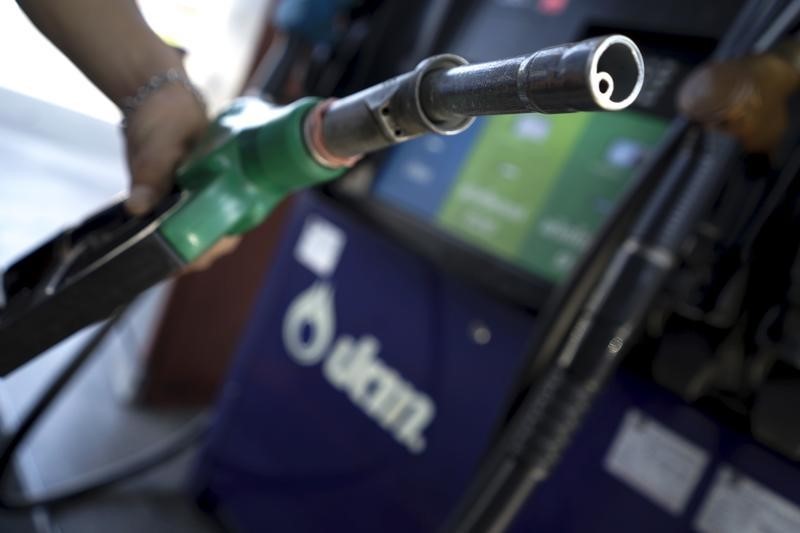U.S. Oil Struggles to Stay Above $100 as Gasoline Stocks Pile up — Again
2022.07.20 20:34

By Barani Krishnan
Investing.com — The bull story in U.S. oil isn’t as bullish as the oil bull would like it to be.
U.S. crude stockpiles and distillate inventories both fell last week, confounding expectations for a build. The problem was with gasoline balances, which ballooned for a second week in a row, in the largest back-to-back build of its kind since January.
Crude prices tumbled about $2 a barrel on Wednesday after the U.S. Energy Information Administration released its weekly inventory numbers that suggested “demand destruction” in gasoline — an unthinkable phrase to longs in the trade.
After a dip under $99, New York-traded West Texas Intermediate crude managed to steady itself back above the key $100-per-barrel mark. Since last Thursday’s plunge to a near five-month low of $90.58, WTI has been struggling to make a definitive return to triple-digit pricing. The past three sessions have seen it gravitate towards last week’s lows before being pulled back higher in the U.S. session.
In Wednesday’s trade, WTI was down 51 cents, or 0.5%, to $100.23 per barrel by 1:10 PM ET (17:10 GMT), after an intraday low at $98.19.
Brent was down 33 cents, or 0.3%, to $107.02 a barrel, after a session low at $103.60. The global crude benchmark hit a near five-month low of $95.42 on Thursday.
Gasoline inventories rose by some 3.5 million barrels during the week ended July 15, after a 5.8-million barrel rise during the week to July 8, the EIA said in its Weekly Petroleum Status Report. Industry analysts had expected a 71,000-barrel build last week and 357,000-barrel decline in the previous week.
It was the largest back-to-back build in stockpiles of gasoline — the main automobile fuel in the United States — since the January 7 and January 14 weeks, during which inventories rose by almost 14 million barrels combined.
The surge came as the average price of gasoline at U.S. pumps held stubbornly at near $4.50 per gallon, a level considered high despite having come off a record peak of $5.01 a gallon in mid-June. Prior to this year, gasoline had rarely ventured above $3.50 a gallon since 2014, even during peak summer driving periods like now.
Economists say energy prices are now among the top three drivers of U.S. inflation, which has been at 40-year highs since last year.
EIA data showed last week’s pump demand for gasoline at 8.5 million barrels, down from the previous week’s 9.3 million.
“It’s only the second straight week of builds in gasoline stocks but it’s the clearest sign yet of demand destruction,” said John Kilduff, founding partner at New York energy hedge fund Again Capital. “U.S. drivers are doing all they can to cut back on their gasoline bill like driving less, going easier with the acceleration, cutting out unnecessary trips and using the most fuel-efficient car in the garage, or even mass transit, when possible.”
EIA data also showed that stockpiles of distillates — the oil variant required for making the diesel needed for trucks, buses and trains, as well as the fuel for jets — fell by 1.3 million barrels last week. Analysts forecast a distillates build of 1.17 million for last week, after the previous week’s rise of 2.67 million.
The better consumption for distillates indicated that more Americans may indeed be relying on public transportation versus cars amid the high prices for gasoline.
Crude oil inventories, meanwhile, fell last week by 446,000 barrels, versus an expected build of 1.36 million. Crude stocks had risen by almost 11.5 million barrels combined in two prior weeks.
The drop in crude inventories came as the EIA reported a relatively smaller drawdown of 5 million barrels of crude last week from the Strategic Petroleum Reserve. Weekly drawdowns from the national oil reserve had previously ranged between 6 million and 7 million barrels over the past month.
The Biden administration has been depending heavily on the reserve to add crude supplies to the market to ease the global supply deficit in oil in the aftermath of the Ukraine conflict and its resulting sanctions on major energy exporter Russia.








